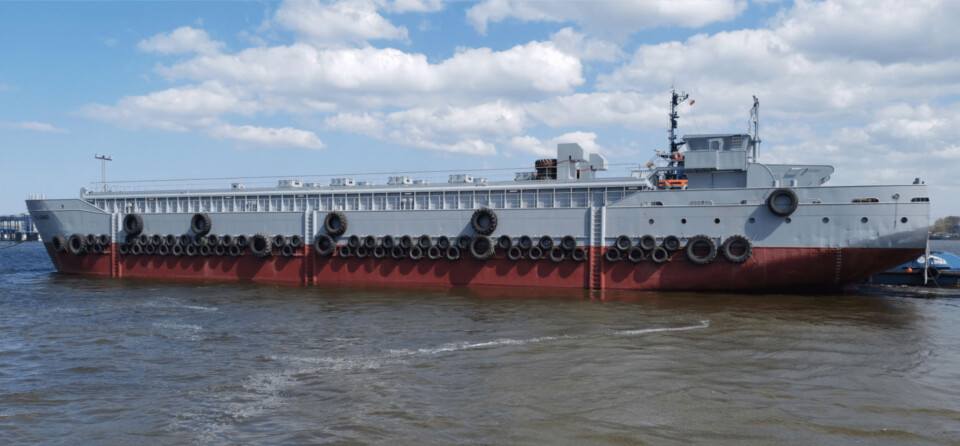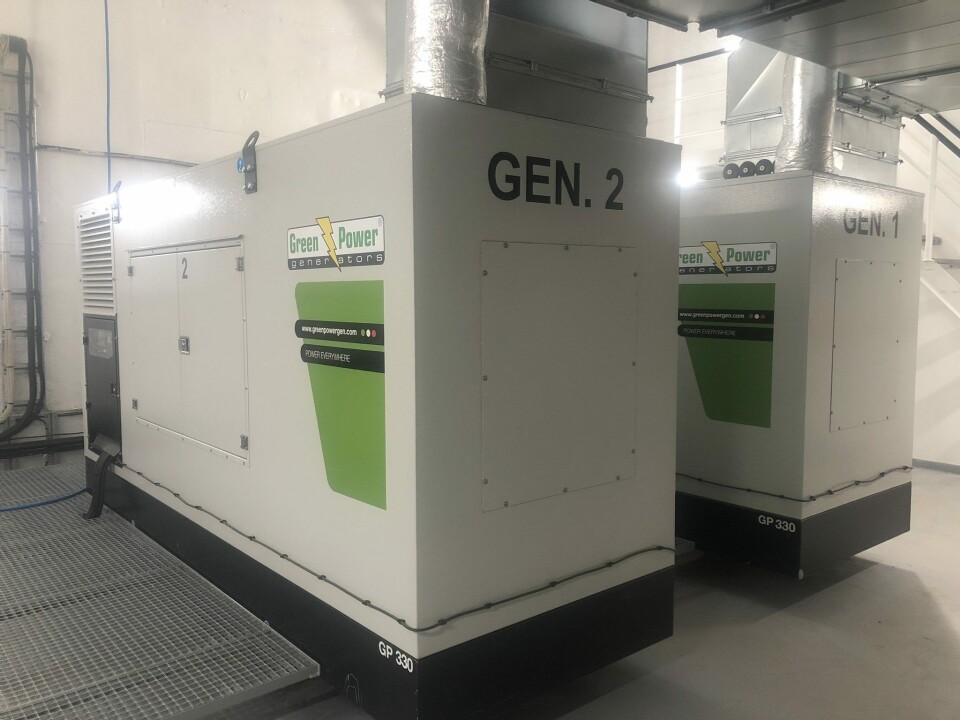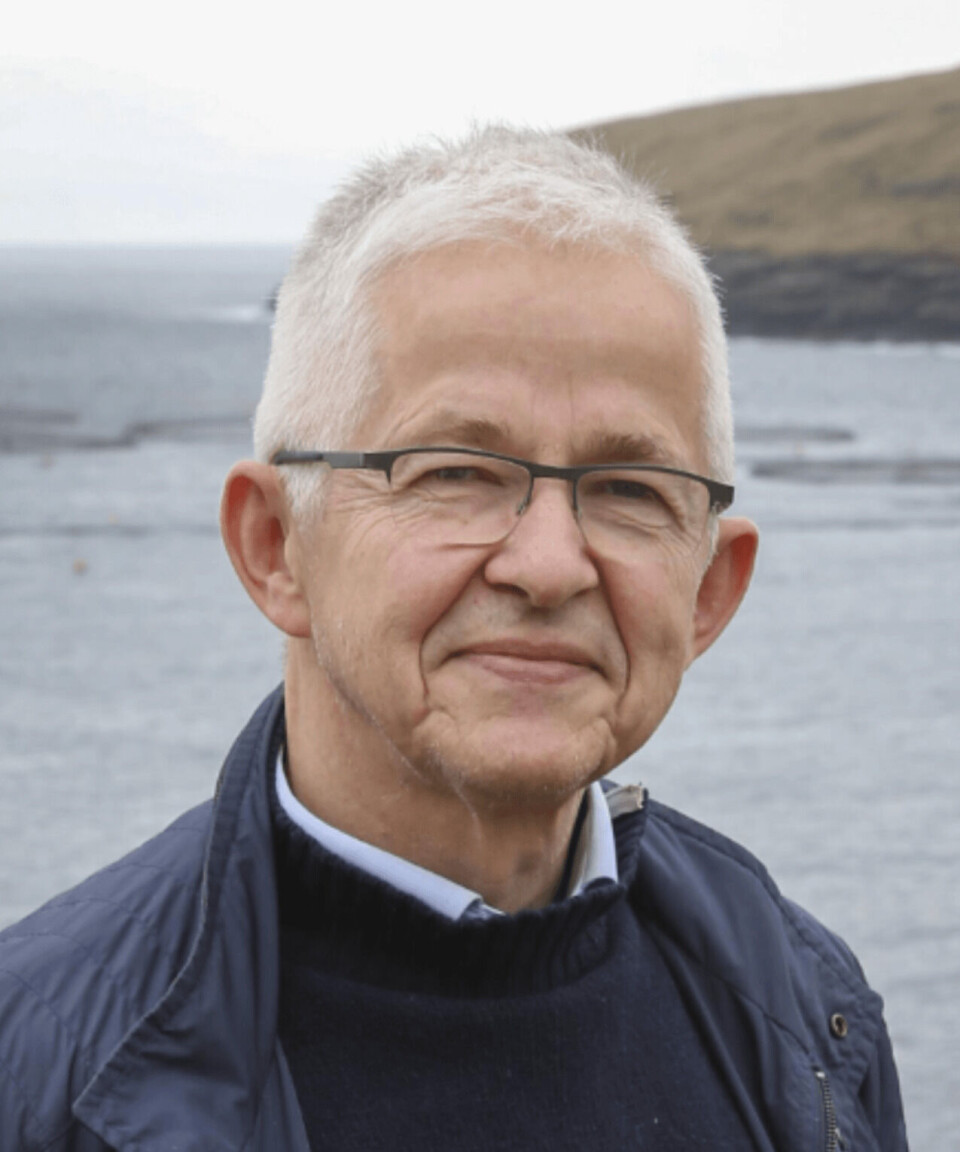
Faroese fish farmer buys huge feed barge for ‘the most-exposed site’
Faroese salmon farmer HiddenFjord has taken delivery of one of the world’s largest feed barges. The “ship-design” barge is converted from a 79-metre-long bulk carrier and has a feed capacity of 850 tonnes that can be upgraded to 1,400 tonnes.
The barge, supplied by Faroese company JT electric, will be anchored at a new site off the northern coast of the island of Vagar, on the western side of the Faroes.
The farm location, called Víkum, is one of the most exposed environments in the world for fish farming, unsheltered from the forces of the North Atlantic.

Inaccessible for weeks
JT electric’s chief executive, Suni Justinussen, said such extreme circumstances set tremendous requirements for the reliability of equipment onboard as the barge can be inaccessible for days or even weeks every year.
The barge is equipped with an eight-line multi-feeding system, developed by JT electric, that is fully automated and can feed both salmon and lumpfish through the same lines. The barge is unmanned so everything is set up to be remotely operated from shore.
Justinussen said great care has been taken to minimise the environmental impact. Blowers and generators have been installed in cabinets to minimise noise pollution, and the barge’s battleship-grey paintwork helps it blend well into the environment.
Extremely high requirements
“Building a feeding barge for such a remote and exposed location has been a very exciting project for us because the requirements are extremely high,” said the chief executive.
“This is the third ship-design feeding barge we have delivered to HiddenFjord.”
JT electrical started converting ocean-going vessels into ship-design barges in 2013 and has been delivering around two a year since then, to the Faroes’ biggest salmon farmer, Bakkafrost, and HiddenFjord, said Justinussen.
The company also supplies its feeding systems to companies who want to modernise their existing barges, and by this summer it will have feeding systems in operation in the Faroe Islands, UK, Canada and in Norway. Justinussen said it already had several systems operating in Scotland.
HiddenFjord managing director Atli Gregersen said there was nothing between the Víkum site and the North Pole, and farming the site was on the border of what is possible. “We have got a licence to farm there and we have spent years looking at everything about it – the depth, the current and not least the waves. It has 9-metre significant waves.”
He added that unlike other areas in the Faroes there was no harbour in the vicinity, so the large barge was needed to withstand the waves and have enough capacity to avoid frequent re-stocking.

200-metre cages
HiddenFjord put a cage on the site, with nets but no fish, last autumn. “We were lucky enough to get some very bad weather and the cage was still there in the spring,” said Gregersen.
The company will use 200-metre circumference cages at the site. Gregersen said a trial in Norway had shown that the larger circles would cope with the wave heights better, as well as providing more volume in the cages.
Lower density
The bigger volume would allow a lower stocking density, which is better for the fish in rough weather because they have more room to move from the sides to the centre of the pen when the net moves inwards.
The site will be stocked either in August or next March. HiddenFjord has invested heavily in post-smolt production and has been stocking fish ranging from 500 grams to 1.2kg. Gregersen said if it stocked the site with its biggest smolts next March they would be ready for harvest by the end of November, before the worst of the winter weather.
“The biggest fish we stocked in our Vestmanna site in autumn were 1.2kg and they are now at full market size of 5kg after eight months,” he explained.























































